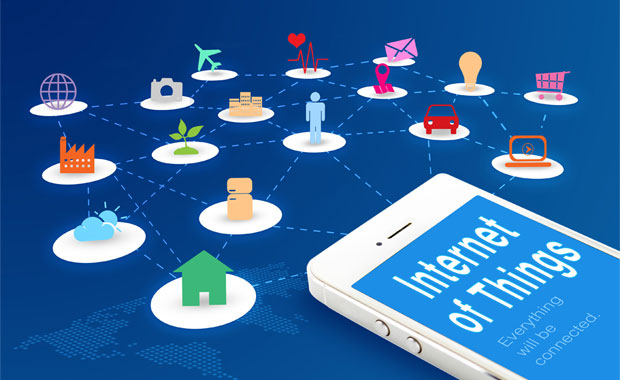If you love studying technology trends and imagining what they will do for your business, it’s easy to lose sight of the fact that you have a vision of how things will be, while many of those you need to partner with to achieve that vision still are trying to master the reality of today.
Congratulations — you have a combination of curiosity, prescience and nerdiness that will serve you well in the nonstop, accelerating change of today. With that ability to position your business to net you results, people will look upon you with admiration as some kind of psychic geek — a “psychgeek,” to coin a rather awkward and forgettable phrase.
That occurred to me last week as I spoke to a reporter about the Internet of Things during my company’s annual conference. The IoT promises to be as big a revolution as the Internet itself, if not bigger, and when you look into it, it’s pretty clear the revolution is here — one in four businesses is already doing business on the IoT in some form,according to Forrester. However, it’s been so quiet as it’s become ubiquitous that even many seasoned tech reporters are having a hard time wrapping their heads around it.
Imagination at Work
In the case of this interview, the questions as they were phrased threatened to understate the impact of the IoT: “Is it for service? Is it for sales? Is it for marketing?” Honestly, but unhelpfully for the reporter, I answered yes to all of the above.
Then when pressed for examples, I tried to span the possibilities, from small, ordinary devices like copy machines and coffee machines to exotic, hugely expensive machines like tunnel borers and mining equipment — everything that can be instrumented can be IoT-enabled. That again led to confusion.
That is entirely understandable. The IoT is not a point solution that solves a few distinct problems neatly. It’s much bigger than that, offering businesses new ways to keep customers happy and loyal while also improving revenues and making sales operations more efficient.
It can drive just-in-time service so that fixes happen before customers experience a breakdown, and it can furnish marketers with real-life usage data so they can deliver the right messages to their customers to ensure they get the most ROI from their purchases while keeping the customer engaged.
The IoT also creates a few problems as well. Salespeople will have to pivot to sell whatever they sell as a service — Printing and Copy as a Service, Tunnel Boring as a Service, Bridge Maintenance as a Service, and on and on. The IoT invites companies to be as imaginative as possible when it comes to improving the customer experience through usage data — but salespeople will need to engage customers’ imaginations in order to make the relationship work and to sell IoT services.
Jet Engines, Printers and More
Maybe some real-world examples can pave the way and kick-start customer imaginations. Here are three of my favorites:
- Power by the Hour: If you’ve ever flown on a commercial airliner or a private jet, you probably flew powered by engines not owned by the carrier but by the engine manufacturer. The concept of leasing engines is 50 years old; with this approach, the engine maker handles maintenance and replacement of engines, while the carrier pays a flat fee.
In recent years, as uptime has become increasingly vital for airlines to maximize their investments, engine manufacturers have taken to using performance telemetry in near real time to preposition technicians and new engines to await aircraft and deliver service as soon as possible.
- Conspicuous Containers: The world’s logistics system is increasingly becoming equipped with IoT-like technology. The arrival of RFID chips more than a decade ago allowed shipping containers to become sensor-enabled devices (able to tell when they were opened, for example); the next step that’s underway is to allow them to transmit this data in real time, along with location data.
That works great aboard ships (where it provides some defense against terrorism, keeps containers from becoming lost in shipment, and may soon enable logistics companies to retrieve some of the wayward containers that fall off ships each year), and it also works well once the container is moved to a truck on its way to its final destination.
- That Paragon of Technology, the Printer: The office device we love to hate has been a pioneer in many ways, with IoT technology enabling printers and copiers to order their own toner and paper when they run low and to report maintenance issues as monitoring presents evidence of impending failures. As any office manager can tell you, calling the copy machine company is one of their worst and most annoying investments in time; with an IoT approach and the right contract, humans calling about a problem with a printer will become a rare thing.
Salespeople as Storytellers
All of those examples would have gone nowhere without salespeople who could articulate them clearly.
One in five business-to-business salespeople will be out of a job by 2020, according to a Forrester report released last year. That led to a widespread acknowledgement that the order taker was dead and the key to sales success lay in making subject-matter experts out of your sales team.
That’s true, but the IoT really takes it deeper than that: Not only must sales become subject-matter experts, but they must also become great storytellers (at least in the near term) to help customers imagine what’s possible. Those stories must be as context-specific to each customer as possible — thus, a full knowledge of every customer, facilitated by CRM and other sales intelligence solutions, will play an even greater role in unlocking your sales team’s talent.
To win in the IoT era, your sales team needs to help your customers see over the horizon to imagine a new way of doing business. In other words, sales must communicate with customers in a way that allows them to become a little more curious, a little more fascinated by the possibility of the future, and, if need be, a bit more nerdy in order to jump-start their imaginations.






















































Social CRM
See all Social CRM